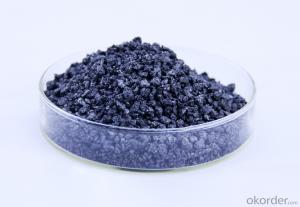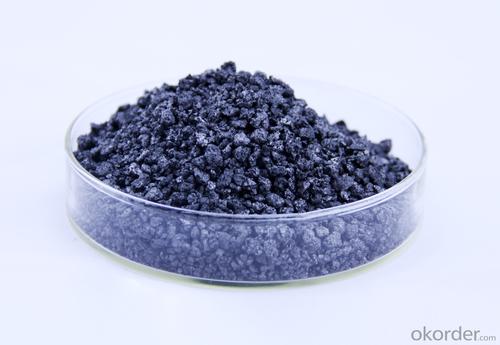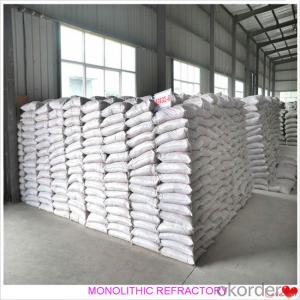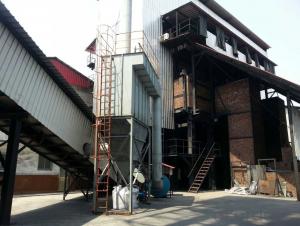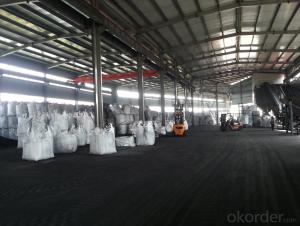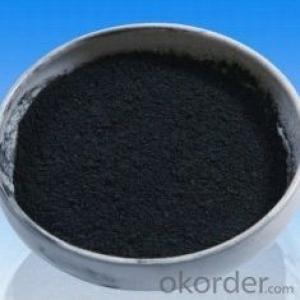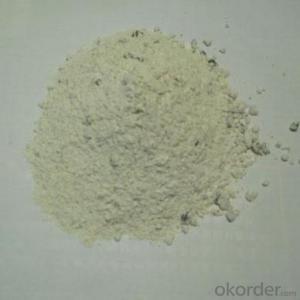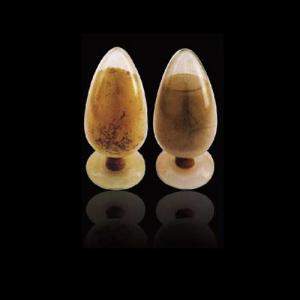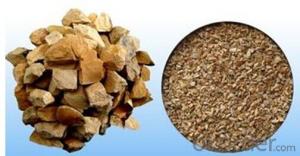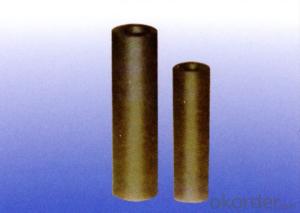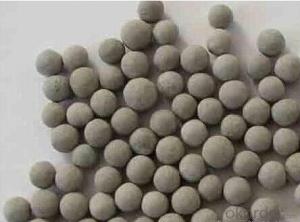Monolithic Refractories for Iron and Steel Industry - Calcined Petroleum Coke Supply with Large Quantity
- Loading Port:
- Shekou
- Payment Terms:
- TT OR LC
- Min Order Qty:
- 20 m.t
- Supply Capability:
- 1000 m.t/month
OKorder Service Pledge
OKorder Financial Service
You Might Also Like
Factory Background
The factory is majorly running and operating carbon additive (pitch coke, calcined petroleum coke and anthracite), low nitrogen carbon additive, and brake pad making material. Company is the long term supplier of Sinosteel Corporation, Shanghai Carbon Corporation, the plant of SGL Group the Carbon Company in China and some largest special carbon products producing plants.
YUAI also supplies huge amout of high quality carbon additive and graphite carbon additive to steel plants, foundries and ferrotungsten plants. YUAI has been assigned by BAO STEEL as the only organization for processing pitch coke for export purpose. The group’s major products are constantly exported to Japan, Korea, Malaysia, South East Asia countries, Europe and America, which receive praises by our consumers.
The group has invested numbers of calcinators in Anhui China to ensure the capability of producing and processing huge amount of carbon additive. Further investment is on process. According to the orders from customers, YUAI is able to processing and providing different specifications of carbon additive and other products. To provide best quality of products and to offer customers most satisfied service is YUAI’s operating objectives.
Calcined Petroleum Coke
FC:98.5%min,
S:0.5%max
A:0.8%max
V:0.7%max
Mositure:0.5%max
Size:1-5mm
This product is mainly used in steel-making and foundry. Calcined Petroleum Coke
Calcined Petroleum Coke comes from delayed coke which extracted from oil refinery. Although Calcined Petroleum Coke contains a little bit higher level of sulfur and nitrogen than pitch coke, the price advantage still makes it widely used during steel-making and founding as a kind of carbon additive/carburant.
Packaging & Delivery
Packaging Detail:25kg paper bag into 1t weaving bag 5kg, 10kg and 20kg weaving bag into 1t weaving bag 25kg weaving bag put on pallet covered with entanglement wrap product direct into packing bag 25kg paper bag put on pallet covered with entanglement Wrap 25kg weaving bag into 1t weaving bag.
Delivery Details: 7 days
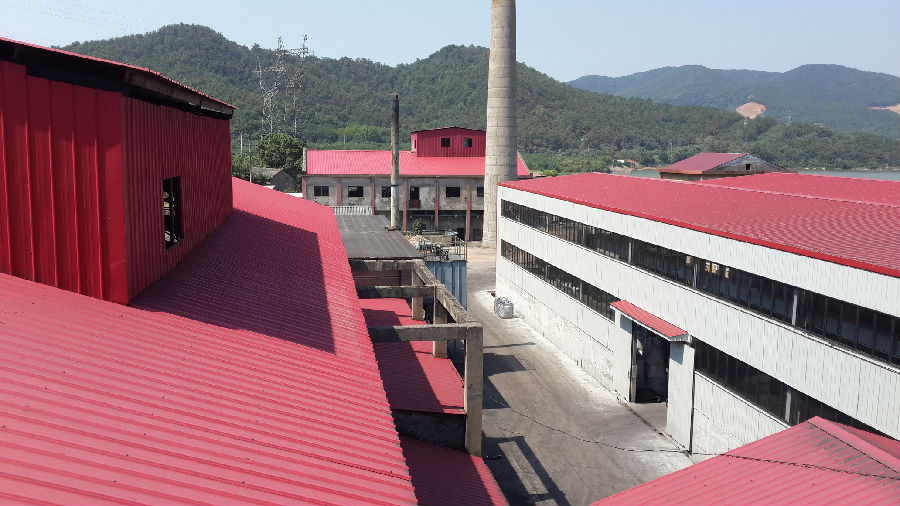
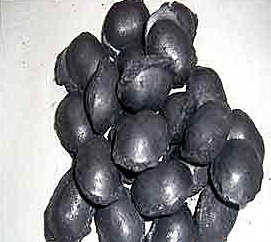
- Q: How are monolithic refractories used in the repair and maintenance of ladles and tundishes?
- Monolithic refractories are extensively used in the repair and maintenance of ladles and tundishes in the steel industry. These refractories are specially designed to withstand the extreme conditions of high temperatures, thermal shock, and chemical erosion that occur during the steelmaking process. When it comes to the repair of ladles, monolithic refractories are used to line the inner walls of the ladle. Ladles are subjected to intense heat and corrosive molten metal, and the refractory lining provides insulation and protection against these harsh conditions. The lining also helps to maintain the desired temperature of the molten metal, ensuring that it remains in a suitable state for processing. In the case of tundishes, monolithic refractories are used to line the bottom and sides of the tundish, as well as the nozzle and impact pad. Tundishes are responsible for distributing molten metal to multiple casting molds and are exposed to high temperatures and thermal shocks. The refractory lining helps to maintain the necessary temperature and prevent any leakage of molten metal. During the repair and maintenance process, monolithic refractories are applied as a dense, high-strength material that is easy to shape and install. They can be shaped into various forms such as bricks, castables, and gunning mixes, depending on the specific requirements of the ladle or tundish. These refractories are often applied using specialized techniques, such as gunning or casting, to ensure proper adhesion and longevity. In addition to their thermal and chemical resistance properties, monolithic refractories also offer excellent mechanical strength and resistance to abrasion. This is crucial in ladles and tundishes, as they are subjected to constant wear and tear from the movement of molten metal and the handling of refractory materials during repair and maintenance. Overall, monolithic refractories play a critical role in the repair and maintenance of ladles and tundishes in the steel industry. They provide the necessary insulation, protection, and durability required to withstand the demanding conditions of steelmaking.
- Q: How do monolithic refractories perform in reheating furnace applications?
- Due to their exceptional thermal stability, strength, and resistance to thermal shock, monolithic refractories are highly effective in reheating furnace applications. These refractories are specifically designed to withstand the harsh operating conditions commonly found in reheating furnaces, including high temperatures and rapid temperature changes. One major advantage of using monolithic refractories in reheating furnace applications is their ability to provide a seamless lining. Unlike traditional brick refractories that require extensive installation and joints, monolithic refractories can be easily applied as a single, homogeneous layer. This eliminates the risk of thermal stress and cracking at joints, ensuring a more reliable and durable lining. Furthermore, monolithic refractories offer excellent thermal insulation properties, which help conserve energy and reduce heat loss in the reheating furnace. This not only improves overall furnace efficiency but also reduces operational costs. In addition to their insulation properties, monolithic refractories exhibit high mechanical strength, allowing them to withstand the mechanical stress and abrasion caused by the movement of the furnace charge. They also have good resistance to chemical attack from gases, slags, and molten metals commonly encountered in reheating furnace operations. Another advantage of monolithic refractories is their ease of repair and patching, minimizing downtime and ensuring continuous furnace operation. They can be easily shaped and molded to fit various furnace geometries, making them highly versatile and adaptable to different reheating furnace designs. In summary, monolithic refractories offer exceptional performance in reheating furnace applications by providing superior thermal stability, strength, and resistance to thermal shock. Their seamless lining, thermal insulation properties, and resistance to mechanical and chemical stress make them an ideal choice for ensuring reliable and efficient furnace operation.
- Q: How do monolithic refractories enhance the performance of ladles and tundishes?
- Monolithic refractories play a crucial role in enhancing the performance of ladles and tundishes in several ways. Firstly, monolithic refractories are known for their high thermal stability and resistance to thermal shock. Ladles and tundishes are subjected to extreme temperatures and thermal cycling during the process of molten metal transfer. Monolithic refractories provide excellent insulation and structural integrity, ensuring that the ladles and tundishes can withstand these harsh conditions without experiencing cracking or failure. Furthermore, monolithic refractories offer exceptional corrosion resistance. In the ladle and tundish environments, molten metal, slag, and other chemicals can cause corrosion and erosion of the lining. Monolithic refractories are designed to resist these corrosive agents, extending the service life of ladles and tundishes and minimizing the need for frequent repairs or replacements. Another advantage of monolithic refractories is their ability to form a tight and seamless lining. Unlike traditional brick or tile linings, which have joints that can deteriorate over time, monolithic refractories are typically applied as a single, continuous layer. This seamless lining significantly reduces the risk of metal and slag penetration, ensuring better containment of the molten metal and preventing contamination. Moreover, monolithic refractories offer versatility and ease of installation. They can be easily shaped and applied to various complex geometries, allowing for customized linings in ladles and tundishes. This versatility also enables faster installation and reduces downtime during maintenance and repairs. Overall, the use of monolithic refractories in ladles and tundishes contributes to improved performance, increased operational efficiency, and reduced costs. Their ability to withstand extreme temperatures, resist corrosion, provide a tight lining, and offer ease of installation makes them a preferred choice in the steel and foundry industries.
- Q: How do monolithic refractories contribute to the reduction of heat loss in iron and steel plants?
- The unique properties and application methods of monolithic refractories are crucial in the efforts to minimize heat loss in iron and steel plants. These refractories consist of single, continuous materials without joints or seams, providing exceptional thermal insulation and reducing heat transfer. A key factor in the reduction of heat loss is the low thermal conductivity of monolithic refractories. These materials possess a high resistance to heat flow, effectively preventing the loss of thermal energy from furnaces, ladles, and other equipment used in iron and steel production. By creating a barrier between the hot interior and cooler surroundings, monolithic refractories effectively minimize heat escape and maintain a stable and efficient thermal environment. Furthermore, monolithic refractories are known for their excellent adhesion and strength, allowing them to form a tight seal and eliminate gaps or cracks in equipment linings. This prevents the entry of cold air and the escape of hot gases, further reducing heat loss and ensuring optimal operating temperatures are maintained. Another advantage of monolithic refractories is their ease of application and repair, leading to a more efficient and cost-effective maintenance process. Regular inspections and repairs can address any wear or damage to the refractory lining, ensuring optimal performance and minimal heat loss over time. In conclusion, monolithic refractories significantly contribute to the reduction of heat loss in iron and steel plants through their low thermal conductivity, excellent adhesion, and high strength. By effectively insulating equipment and preventing heat escape, these refractories promote energy efficiency and productivity in the iron and steel industry.
- Q: What are the key properties of ramming mixes used for monolithic refractory installations?
- The key properties of ramming mixes used for monolithic refractory installations include high density, good flowability, high strength, excellent thermal shock resistance, chemical resistance, and low porosity. These properties ensure the ramming mix can be compacted easily during installation, withstand high temperatures without cracking, and resist chemical attacks from molten metals or corrosive gases. Additionally, low porosity helps to minimize heat loss and enhance the overall performance and longevity of the refractory lining.
- Q: How do monolithic refractories enhance the performance of ladle and tundish preheating systems?
- There are several ways in which monolithic refractories play a crucial role in improving the performance of ladle and tundish preheating systems. To begin with, monolithic refractories possess outstanding thermal insulation properties, which aid in retaining heat within the ladle and tundish preheating systems. This insulation ability reduces heat loss and ensures that the preheating systems operate at optimal temperatures. By maintaining a consistent and high heat level, monolithic refractories enable efficient preheating of ladles and tundishes, thereby reducing the time required for the preheating process. Furthermore, monolithic refractories exhibit high refractoriness, enabling them to withstand extreme temperatures without significant degradation. This is especially important for ladle and tundish preheating systems that endure intense heat during operation. The capacity of monolithic refractories to withstand high temperatures ensures their longevity and prevents premature failure, resulting in enhanced performance and reliability of the preheating systems. Moreover, monolithic refractories possess exceptional resistance to thermal shock. The preheating process often subjects ladles and tundishes to rapid temperature changes, which can cause thermal stress and lead to cracking and spalling of the refractory lining. However, monolithic refractories, with their superior resistance to thermal shock, can endure these rapid temperature fluctuations without sustaining significant damage. This resistance guarantees the integrity of the refractory lining, extending the lifespan of the ladle and tundish preheating systems and improving their overall performance. Additionally, monolithic refractories offer good mechanical strength and abrasion resistance. Ladles and tundishes frequently experience mechanical forces, such as stirring and pouring of molten metal. The presence of monolithic refractories with high mechanical strength and abrasion resistance ensures the integrity of the refractory lining even under harsh conditions. This durability allows for prolonged and efficient operation of the preheating systems, contributing to their enhanced performance. In conclusion, monolithic refractories enhance the performance of ladle and tundish preheating systems through their excellent thermal insulation, high refractoriness, resistance to thermal shock, and good mechanical strength and abrasion resistance. These properties enable efficient and reliable preheating, minimize heat loss, prevent premature failure, and prolong the lifespan of the preheating systems, ultimately improving their overall performance.
- Q: How do monolithic refractories contribute to the safety of iron and steel operations?
- Monolithic refractories play a crucial role in ensuring the safety of iron and steel operations. They provide excellent thermal insulation and resistance to high temperatures, preventing heat transfer to the environment and minimizing the risk of accidents or fires. Additionally, these refractories possess high mechanical strength and chemical resistance, protecting the structural integrity of furnaces and other equipment under extreme conditions. By effectively containing heat and maintaining the stability of the production process, monolithic refractories enhance the overall safety and reliability of iron and steel operations.
- Q: How do monolithic refractories mitigate heat loss in iron and steel operations?
- Monolithic refractories possess unique properties and composition that make them highly effective in reducing heat loss in iron and steel operations. Unlike other refractories, monolithic ones are made from a single, continuous material, making them resistant to cracks and gaps that could potentially allow heat to escape. One major advantage of monolithic refractories lies in their exceptional thermal conductivity and insulation properties. With their low thermal conductivity, they are able to effectively limit the transfer of heat from hot areas to cooler surroundings. This insulation characteristic helps maintain high temperatures within iron and steel operations, resulting in reduced heat loss to the environment. Another contributing factor to heat loss mitigation is the ability of monolithic refractories to form a tight seal with the metal structures they are applied to. They adhere well to surfaces and fill in any gaps or irregularities, creating a solid barrier against heat loss. By minimizing the possibility of heat escaping, these refractories ensure that the energy generated within the operations is utilized effectively. Additionally, monolithic refractories exhibit high resistance to thermal shock. In the iron and steel industry, rapid temperature fluctuations are common, which can lead to material deterioration and cracks. However, monolithic refractories possess the ability to withstand these temperature changes without compromising their structural integrity. This guarantees the longevity and effectiveness of the refractories in mitigating heat loss. In summary, monolithic refractories play a vital role in reducing heat loss in iron and steel operations through their excellent insulation, ability to form a tight seal, and resistance to thermal shock. These properties enable them to maintain high temperatures, optimize energy utilization, and enhance overall process efficiency.
- Q: What are the limitations of monolithic refractories in high-temperature applications?
- Monolithic refractories are known for their versatility and ease of installation, making them popular in a variety of high-temperature applications. However, they do have certain limitations that need to be considered. Firstly, monolithic refractories have a limited thermal shock resistance. Rapid temperature changes, such as during startup or shutdown procedures, can cause thermal stress, leading to cracking or spalling. This can be a significant concern in applications where the refractory is subjected to frequent temperature fluctuations. Secondly, monolithic refractories have relatively lower mechanical strength compared to traditional brick or block refractories. This can result in reduced resistance to mechanical stress, such as abrasion or impact, particularly in high-temperature environments. Therefore, they may not be suitable for applications with high mechanical loading or abrasive conditions. Another limitation of monolithic refractories is their susceptibility to chemical attack. Certain aggressive chemical environments can cause chemical reactions with the refractory material, leading to deterioration or corrosion. This can be a concern in applications involving acidic or alkaline substances, where special refractory materials may be required. Furthermore, monolithic refractories can have a higher susceptibility to spalling or erosion caused by thermal cycling. The repeated expansion and contraction of the refractory material due to temperature changes can lead to the formation of cracks or gaps, making them more prone to erosion from gases or liquids. This limitation should be carefully considered in applications where long-term durability is essential. Lastly, monolithic refractories can be challenging to repair or replace compared to brick or block refractories. Once installed, it can be difficult to remove and replace a monolithic lining, especially in complex shapes or confined spaces. This limitation can result in longer downtime or increased costs for maintenance or repairs. In summary, while monolithic refractories offer several advantages in high-temperature applications, they also have limitations in terms of thermal shock resistance, mechanical strength, chemical resistance, erosion, and repairability. These limitations should be carefully evaluated to ensure the suitability of monolithic refractories for specific application requirements.
- Q: How do monolithic refractories improve energy efficiency in the iron and steel industry?
- Monolithic refractories play a crucial role in improving energy efficiency in the iron and steel industry through various mechanisms. Firstly, these refractories have excellent insulation properties, which help in reducing heat loss during the production process. By minimizing heat loss, monolithic refractories ensure that more heat is retained within the furnace, resulting in higher energy efficiency. Moreover, monolithic refractories have low thermal conductivity, allowing for better heat transfer within the furnace. This means that the heat generated during the production process can be efficiently distributed throughout the furnace, enabling optimal temperature control and reducing energy wastage. In addition, monolithic refractories have high resistance to thermal shock and corrosion, which are common challenges in the iron and steel industry. By withstanding extreme temperatures and chemical reactions, these refractories prevent premature wear and tear, thus reducing the need for frequent repairs and replacements. This not only saves energy but also minimizes downtime, leading to increased productivity and energy efficiency. Furthermore, the use of monolithic refractories allows for better furnace design and optimization. Their flexibility enables the creation of custom shapes and linings that suit specific furnace requirements, resulting in improved heat transfer and combustion efficiency. This customized approach promotes energy savings by maximizing the utilization of fuel and reducing emissions. Lastly, monolithic refractories have a longer lifespan compared to traditional brick refractories. This prolonged durability reduces the frequency of refractory replacements, resulting in lower energy consumption associated with the manufacturing and installation of new refractories. Overall, monolithic refractories contribute significantly to energy efficiency in the iron and steel industry by reducing heat loss, improving heat transfer, withstanding thermal shock and corrosion, enabling better furnace design, and increasing refractory lifespan. Their use not only saves energy but also enhances productivity and sustainability within the industry.
Send your message to us
Monolithic Refractories for Iron and Steel Industry - Calcined Petroleum Coke Supply with Large Quantity
- Loading Port:
- Shekou
- Payment Terms:
- TT OR LC
- Min Order Qty:
- 20 m.t
- Supply Capability:
- 1000 m.t/month
OKorder Service Pledge
OKorder Financial Service
Similar products
Hot products
Hot Searches
Related keywords

